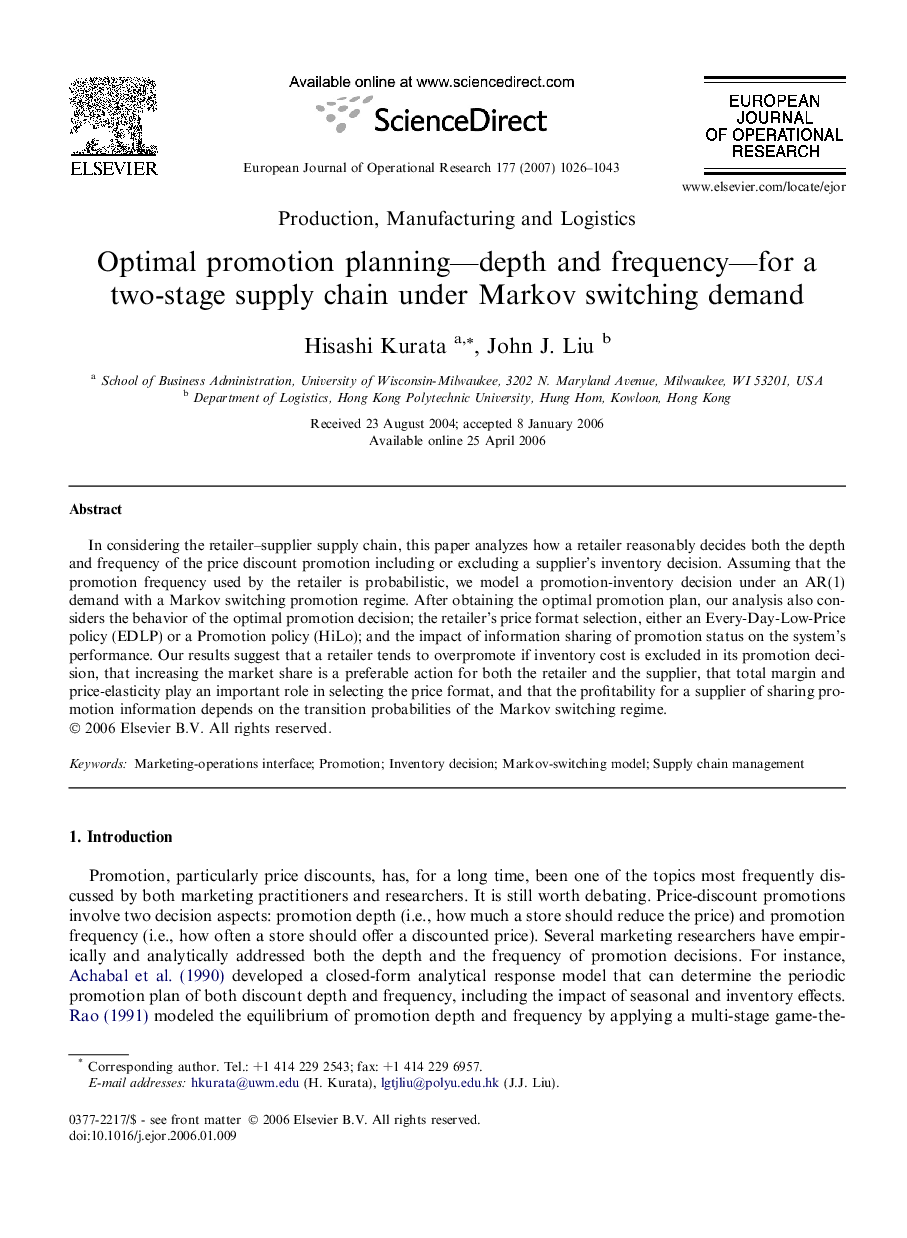| Article ID | Journal | Published Year | Pages | File Type |
|---|---|---|---|---|
| 477838 | European Journal of Operational Research | 2007 | 18 Pages |
In considering the retailer–supplier supply chain, this paper analyzes how a retailer reasonably decides both the depth and frequency of the price discount promotion including or excluding a supplier’s inventory decision. Assuming that the promotion frequency used by the retailer is probabilistic, we model a promotion-inventory decision under an AR(1) demand with a Markov switching promotion regime. After obtaining the optimal promotion plan, our analysis also considers the behavior of the optimal promotion decision; the retailer’s price format selection, either an Every-Day-Low-Price policy (EDLP) or a Promotion policy (HiLo); and the impact of information sharing of promotion status on the system’s performance. Our results suggest that a retailer tends to overpromote if inventory cost is excluded in its promotion decision, that increasing the market share is a preferable action for both the retailer and the supplier, that total margin and price-elasticity play an important role in selecting the price format, and that the profitability for a supplier of sharing promotion information depends on the transition probabilities of the Markov switching regime.
